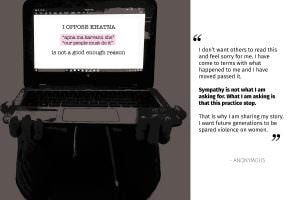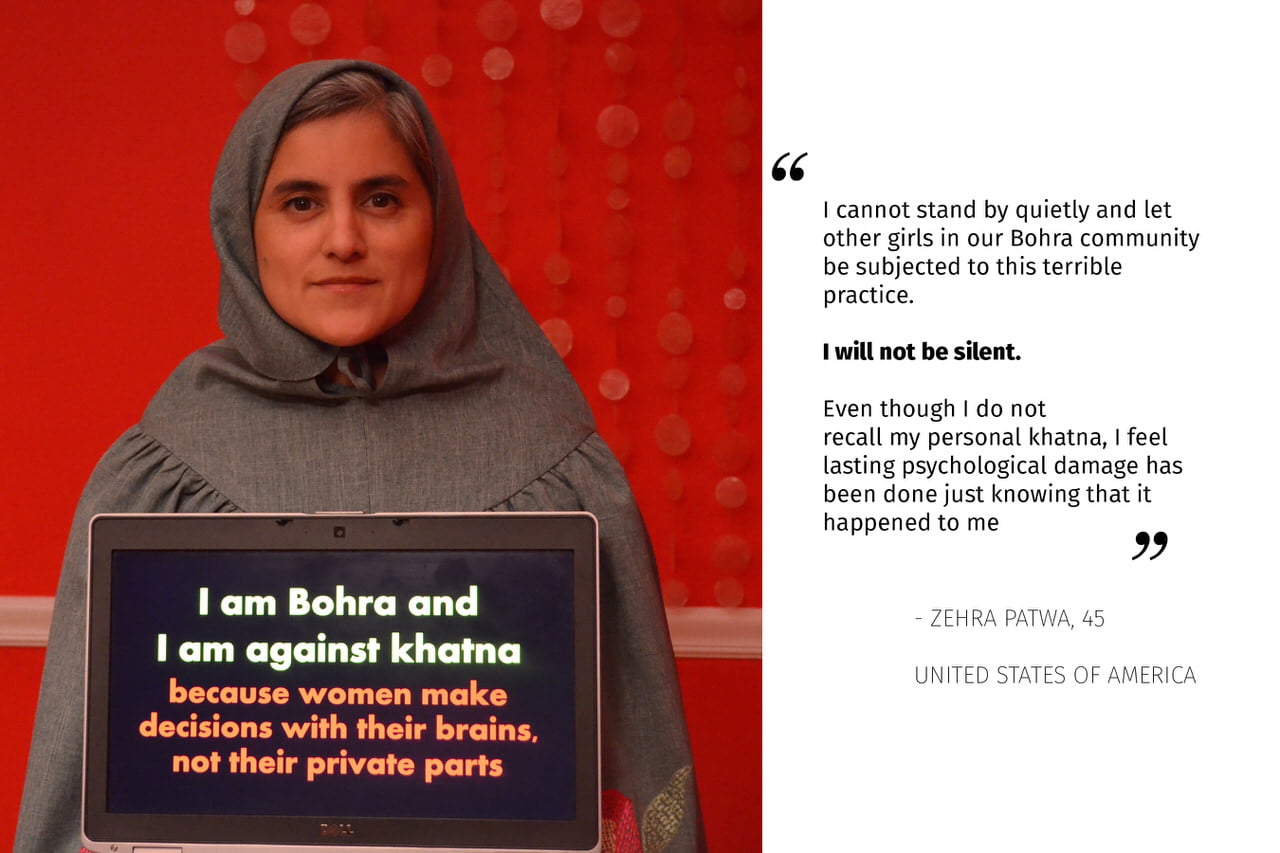Posted by Mariya Taher
February 6th marks International Day Of Zero Tolerance For Genital Mutilation and on this day activists, NGOs, survivors, supporters and governments will call for an end to the continuation of Female Genital Mutilation/Cutting (FGM/C). Sahiyo will join in with this advocacy effort by launching a powerful video, Deen and Duniya (Religion and the World) by Alisha Bhagat, on Sahiyo’s social media platforms to continue with our storytelling advocacy efforts to bring dialogue on Female Genital Cutting (FGC) out into the open.
Since December 2015, Sahiyo has been shedding light on the extent and prevalence of FGC in India and amongst Indian diaspora communities through storytelling.
FGM/C comprises all procedures involving partial or total removal of the female external genitalia or other injury to the female genital organs for non-medical reasons as defined by the World Health Organization (WHO). This practice is considered a human rights violation falling under International Covenant on Economic, Social and Cultural Rights (ICESCR), the Convention on the Elimination of All Forms of Discrimination against Women (CEDAW), and the Convention on the Rights of the Child (CRC).
WHO has categorized the different forms of FGC into four categories based on the severity of the practice performed on a girl. Type 1 is considered the least severe and Type III the most severe. Type IV is the category into which all other types of FGC are clubbed. Globally, Type I and Type II are the most common FGC procedures, accounting for more than 85% of all procedures.
The Dawoodi Bohra community, whose religious headquarters are in Mumbai, is known to practice Type 1 FGC, in which a part of the clitoral hood is removed from pre-pubescent girls, usually at the age of seven. Within the community, the practice is referred to as Khatna or Khafd.
Through Sahiyo’s blog, we have helped highlight the voices of women who have undergone the practice, women who have not undergone the practice, and men who have wives, daughters or sisters who have undergone it. Their collective voices have grown steadily in number with each passing month, helping to build towards a much needed critical mass of voices who represent the community’s desire to abandon the centuries-old harmful practice.
Also Read: Sahiyo: Empowering Dawoodi Bohra Communities & Putting An End To Female Genital Cutting
On the blog itself, you can read stories about women who are speaking up about both their physical and emotional traumas experienced due to FGC. You read stories about women who never experienced FGC but were told never to let another soul know the truth. You read stories about parents – both men and women – who faced extreme social pressure to have their daughter undergo FGC, but who regret it immensely. You read stories about women who have perfectly normal lives despite their khatna, but who still understand it is a violence they should never have been subjected to. You read stories about survivors, about activists, about those who have taken back the power that was lost to them with their cut by working to end the practice for the sake of future generations.
Through our storytelling, Sahiyo has heard from dozens and dozens of other women and men who want to speak more about the issue. Still, we know a large gap exists in terms of access to support services and policy advocacy efforts to end FGC in all countries. We know that it has only been a few years since the global prevalence of FGC was recognized internationally. We know more needs to be done.

A survivor of FGC speaks out against ‘khatna’.
In January 2017, Sahiyo launched a petition in collaboration with 31 other civil society organizations to petition the U.N. to invest in research and support to end Female Genital Cutting by 2030. According to the United Nations, at least 200 million women in 30 countries have been subjected to Female Genital Mutilation/Cutting (FGM/C). However, these statistics are largely restricted to sub-Saharan Africa and ignore the global scope of the issue. In most Asian countries where FGM/C has been reported, preliminary research studies on FGC prevalence are yet to be pursued. The petition urges the U.N. to direct more investment and support towards FGM/C in Asia. This gap must be addressed in order to reach the U.N.’s Sustainable Development Goal of ending FGM/C by 2030.
Until this goal can be achieved, Sahiyo continues to invest in storytelling to help this tradition become a thing of the past. We share stories because there is power in storytelling: many of the women (and men) who have submitted stories to us, do so in order to reclaim a piece of themselves that was lost when they underwent it, or when their loved ones had to undergo it. We share stories because we recognize that social change takes time, but we know that every voice speaking up against FGC in the Dawoodi Bohra community is a voice that is helping to change the perception that khatna is a religious requirement, a social norm that must be continued. Every voice that speaks out gives recognition to the fact that FGC is a form of gender violence that has been justified and continued in the name of a tradition, for far too long.
Do you want to become involved in the work to end female genital cutting? Contact Sahiyo at info@sahiyo.com or visit us at sahiyo.com.
Mariya Taher is a part of the organization Sahiyo, which is dedicated to empowering Dawoodi Bohra and other Asian communities to end female genital cutting (FGC) and create positive social change.
About the author(s)
Guest Writers are writers who occasionally write on FII.




